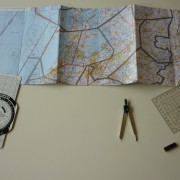Aircraft navigation, how does it work?
The basic principles of navigation are almost identical to those of general land based navigation. This includes the process of planning, recording, and controlling movement of the chosen craft from one area to another.
Successful air navigation means piloting an aircraft from one destination to another without becoming lost, or veering from the chosen path (as well as ensuring the safety of ones self and passengers(s) is never compromised during this timespan). Air navigation differs majorly from traditional navigation in a few ways. These include but are not limited to the inability to become stationary and wait for rescue/assistance, there is no in-flight rescue, and a constant state of awareness must be maintained in order to safely maintain trajectory and reach ones plotted destination.
Techniques used for navigating differ depending upon the situation the pilot is in. The pilot can either be flying under visual flight rules (VFR) or instrument flight rules. (IFR) If the pilot is operating under IFR, then he/she will be flying using solely instruments with some assistance from radio navigation aids. (Beacons, radars)
To much to remember? Why not leave the flying to the professionals and book an airport shuttle today with one of Sydney’s best airport shuttle services! If you’re looking for a reliable driver at a modest price, Ned’s Airport Shuttle Service is the one for you.


